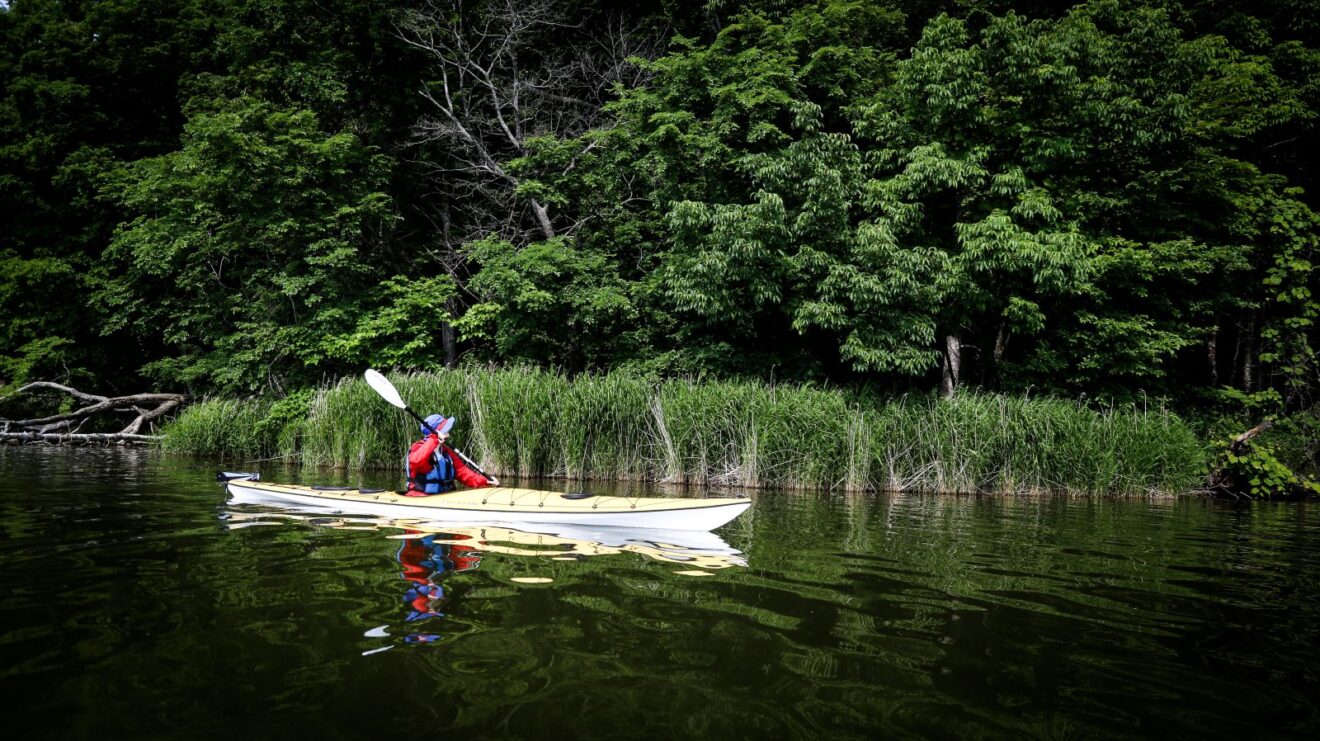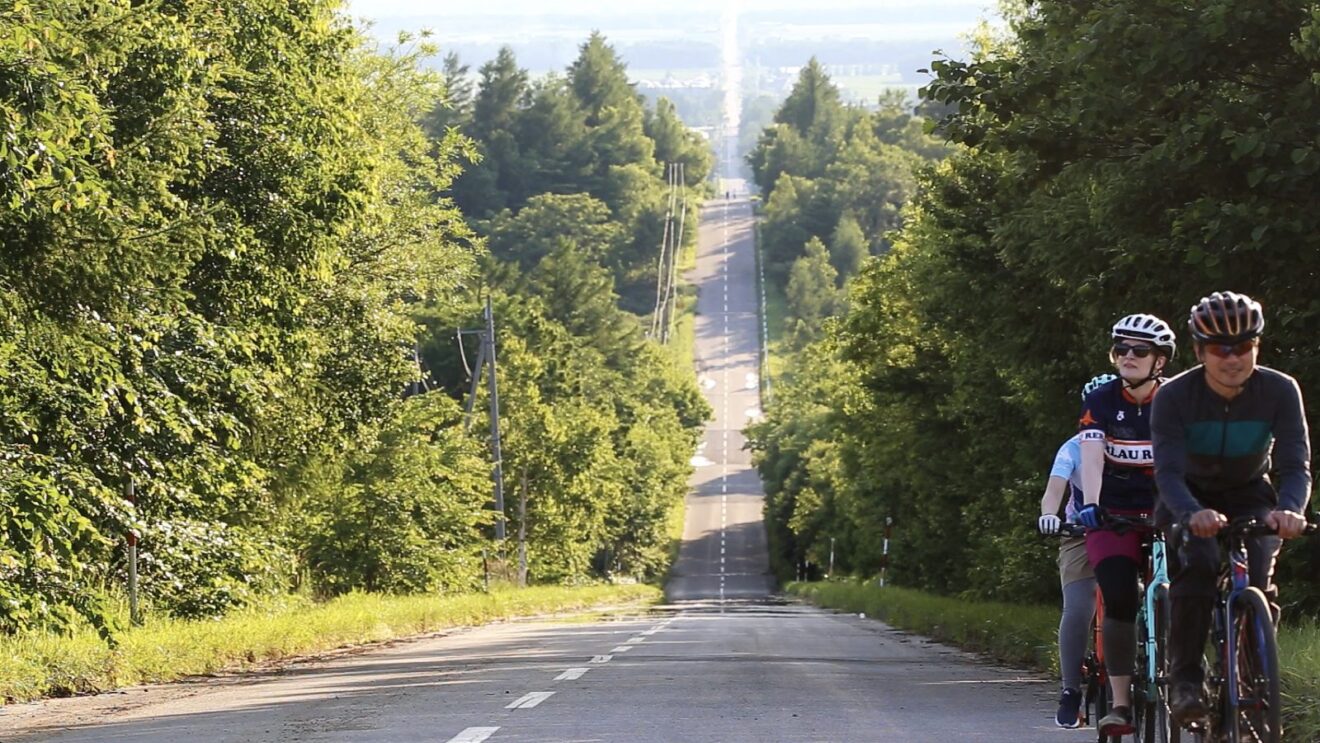Tour Duration: 5 days
Price : 410,000yen/person
Departure Location: Memanbetsu Airport
Following the path of the winter drift ice, this once-in-a-lifetime cycling journey will take you from Abashiri City through the Shiretoko UNESCO World Natural Heritage Site. You will bike along the Sea of Okhotsk coast and proceed towards the Shiretoko peninsula with your local expert cycling guide. The Japanese name “Shiretoko” is derived from the native Ainu “Sir Etok,” meaning “the end of the earth.” You will get a chance to see local culture and discover how the drift ice phenomena affects daily life on this tour. It will take a total of 144 km (88 miles) of cycling to reach Japan’s fabled “End of the Earth” along the coast and up moderate hills.
The Shiretoko peninsula, which is on the very eastern extremity of Hokkaido, is included as a UNESCO World Natural Heritage Site because of the abundance of nature there and in the surrounding sea. A mass of seawater ice is thinned by the natural forces of the Amur River over 1000 km (621 miles) from Hokkaido, in part because of the drift ice. In the winter, the ice near Shiretoko feeds nutrients to the sea, supporting the area’s abundance. In the winter, the Sea of Okhotsk has an icy surface due to drift ice.
Day 1 Cycle up to 144km/88miles (about 72km/44miles a day)
At the eastern Hokkaido airport at Memanbetsu, where the other group members will be waiting for you, at 13:00. We will have a quick meeting as soon as everyone is gathered to introduce ourselves and inform everyone about our planned 5-day excursion. After that, a private van will take us to the Hokkaido Museum of Northern Peoples in Abashiri. The drift ice congregates in Abashiri during the winter. The city is regarded as serving as the gateway to the Okhotsk region.
Numerous exhibits about the culture of the peoples who adapted their way of life to this cold climate are available in the museum. By learning about the lifestyles of the ethnic minorities in the northern region connected by drift ice, you will have the opportunity to discover the connections between the world and Japan (particularly Hokkaido). You will gain a clearer understanding of the relationship between prehistoric life in the north and our kayaking expedition thanks to this museum visit. Kayaks were used by the ancient Okhotsk inhabitants to hunt seals and whales, which were much larger than the kayaks. We will have a much more enjoyable kayaking trip if we are aware of the history of the local population.

Day 2 Environmentally friendly activities that emit little carbon dioxide
After breakfast, we get in our own van and drive to the place where our adventure for today will begin at Lake Abashiri. We take pleasure in kayaking on Lake Abashiri in Abashiri Quasi-National Park, which is somewhat reminiscent of the ancient northern people. Anyone can enjoy kayaking and taking in the breathtaking scenery. The lake is home to a variety of birds, including kingfishers, cormorants, ducks, and gray herons. All year long, white-tailed eagles can be seen in the neighborhood.
We will reach the riverbank Omagari Garden after about an hour of paddling. To preserve the independence of the instructors and the prisoners, Abashiri Prison cleared and farmed this territory. We will get some local produce here to use for our meal today. On the way back, we’ll enjoy some more kayaking and bird viewing before making our way across moderate streams back to the starting site for lunch.
Today’s lunch will be a pizza made using freshly gathered local vegetables and wheat from a nearby farm. At the riverfront, we’ll prepare our original pizza in a homemade pizza oven.
Following dinner, we will be joined by our cycling tour guide for the remainder of the trip. He will give us a lecture about the route we will take to reach Shiretoko and we will test-ride our bikes for approximately an hour while enjoying the Okhotsk air.

Day 3 You can feel the drift ice and fisheries that are affected by global warming
Our bike tour guide will join us for the remainder of the journey after dinner. We will test-ride our motorcycles for about an hour while taking in the Okhotsk air after he lectures us on the route we will travel to get to Shiretoko.
We’ll be cycling along the Sea of Okhotsk, which is the world’s most southern location where the drift ice phenomena may be seen (around February, not at the timing of this tour). While tracking the drift ice’s path, we can get a close-up look at how people live around the Sea of Okhotsk. We might also take pleasure in how the environment around us changes. The Okhotsk region’s Abashiri is renowned for having Japan’s most successful agriculture, cattle, and fishing sectors. We’ll take pleasure in a 6-hour Shiretoko cycling trip with some incline and decline. We can sense the diversity of this region because the key industries here are dominated by the craft, processing, and emerging industries.
We will stop at a local restaurant for today’s lunch. They employ a lot of Hokkaido-produced ingredients in their well-known curry recipe, including local beef and onions. Famous soft-serve ice cream from Eastern Hokkaido is made with only 100 percent milk. We’ll carry on riding through Shiretoko until we reach Kiyosato, a tiny settlement. Around 4 PM, we will arrive at our onsen hotel for the day.

Day 4 You can experience various changing environments and terrain while traveling on a bicycle
Today, you will get the chance to contrast the lakes, dunes, grasslands, and hills of the Abashiri Quasi-National Park with the Shiretoko National Park, which is made up of rocks and mountains. At one of the most important spiritual locations in Eastern Hokkaido, we begin our cycling excursion today by collecting some natural spring water and saying a prayer for a safe journey to Shiretoko. We are now prepared to pedal to the Ikushina Primitive Flower Garden, which has a view of the lovely Shiretoko peninsula. From there, we can experience Hokkaido’s vastness as we travel along the “Road to Heaven,” a straight road that is 28 km (17 miles) long and so named because it appears to reach the heavens.
At the pottery studio Shari Kiln, there is a cafe where we will stop for lunch. The pottery is created in the traditional kilns of Japan’s northeastern point by igniting the native soil with Hokkaido firewood. By their ceramics, they offer lunch, desserts, and wonderful coffee made with locally sourced natural ingredients.
On the Shiretoko Peninsula, take in the iconic Oshinkoshin waterfall and the Sea of Okhotsk’s sea breeze. The purpose of our challenging 6-hour Shiretoko cycling course is to educate you about the Shiretoko Peninsula at the Shiretoko World Heritage Center.

Day 5 Get water from Raiun Shrine, where the natural spring water of Mt. Shari springs up
Today is the day we enter Shiretoko, the most eastern national park in Japan, and take in its natural beauty. The Shiretoko Goko Field House is where you may learn about the Shiretoko Goko Lakes’ flora and animals after leaving the hotel. The Shiretoko Mountain Range can be seen in the background while the five enigmatic Shiretoko Goko Lakes are tucked away in a prehistoric forest. Numerous wild creatures also call the lake area home. This location allows us to appreciate Shiretoko’s natural beauty by spotting bear claw prints and black woodpecker traces. A local naturalist can lead you on a stroll through the Shiretoko Goko Lakes.
We will drive 2 hours along the same road you cycled previously from the Shiretoko Goko Field House in Shiretoko National Park back to the Abashiri Quasi-National Park region. For lunch on the last day, we’ll get a “food mileage zero” lunchbox crafted by the locals. As many locally sourced, fresh products as possible are included in this bento box. As it takes 4 hours to travel to Sapporo, the capital of Hokkaido, you can take a great snooze in the van on the way there. Around 17:00, we bid our goodbyes at the JR Sapporo Station, which is located in the heart of the city.






